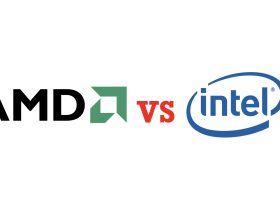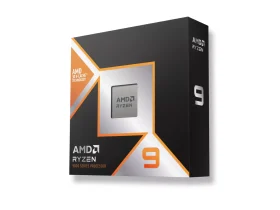T-Mobile has officially announced the pricing details for its Starlink-powered satellite texting service, a groundbreaking initiative aimed at ensuring connectivity in remote areas and mobile dead zones. After an initial free trial period, the service will cost $15 per month for T-Mobile customers starting in July.
The service, currently in its beta testing phase, was unveiled in a Super Bowl ad, emphasizing the strategic partnership between T-Mobile and SpaceX’s Starlink satellites. This collaboration aims to bridge connectivity gaps, providing off-the-grid messaging and, eventually, voice and data services.
T-Mobile’s Satellite Texting: Pricing and Availability
T-Mobile users can currently sign up for the beta program online, gaining early access to the satellite-supported messaging service. Starting in July, the standard monthly cost will be $15 for most T-Mobile plans, while trial participants will pay a discounted rate of $10 per month.
However, customers subscribed to T-Mobile’s premium Go5G Next plan will receive the feature at no extra cost. Interestingly, the service won’t be exclusive to T-Mobile customers—Verizon and AT&T users with eSIM-supported devices will also have access, though at a slightly higher cost of $20 per month.
How T-Mobile and Starlink’s Satellite Texting Works
T-Mobile’s satellite-enabled messaging is designed to function without cellular towers, making it ideal for rural areas, remote locations, and emergency scenarios.
Initially, the service will only support basic SMS texting in areas without cellular coverage, but T-Mobile has future plans to expand its capabilities to include:
- MMS (picture messaging)
- Voice calls
- Data services
According to Mike Katz, T-Mobile’s president of marketing, strategy, and products, the company is essentially “putting cell towers in space”, making it possible for users to stay connected even in the most isolated locations.
Emergency and Disaster Relief Connectivity
This satellite texting service isn’t just about staying connected in remote locations—it also has a critical role in emergency situations.
Last year, T-Mobile and Starlink offered emergency messaging services in disaster zones, ensuring that individuals—regardless of their carrier—could send SOS texts and receive emergency alerts. This initiative played a vital role in helping people communicate during hurricanes, wildfires, and other natural disasters.
Recently, the Federal Communications Commission (FCC) granted regulatory approval for T-Mobile and Starlink to commercialize the service, marking a major milestone in satellite-to-cell communication technology.
How T-Mobile’s Satellite Texting Compares to Apple’s Emergency SOS
The satellite communication landscape is heating up, with major players like Apple and Verizon entering the space.
Apple recently added Starlink compatibility to its latest iPhone software update, allowing iPhone users on T-Mobile networks to access satellite connectivity. However, Apple already provides a similar service via Globalstar, enabling users to send emergency texts and contact first responders when outside cellular coverage.
With T-Mobile’s Starlink-powered service, users will have broader capabilities beyond just emergency use, making it a viable alternative to Apple’s limited satellite messaging system.
Verizon’s Competition: AST SpaceMobile and Direct-to-Cell Technology
T-Mobile isn’t the only carrier embracing direct-to-cell satellite technology. Verizon recently secured regulatory approval to test its own satellite-based messaging, voice, and data service in collaboration with AST SpaceMobile.
- Verizon showcased its satellite-to-cell capabilities in a high-profile ad during the Grammy Awards, featuring Apollo 11 astronaut Buzz Aldrin.
- AST SpaceMobile’s satellite network aims to compete directly with Starlink’s solution, providing global satellite connectivity to Verizon customers.
As the race for satellite-enabled mobile services heats up, consumers can expect greater competition, improved connectivity, and expanded coverage options in the coming years.
The Future of Satellite-Based Mobile Networks
Satellite connectivity is quickly becoming a game-changer for the telecommunications industry, allowing carriers to extend their coverage beyond traditional cellular networks.
Some key trends and developments shaping the future of satellite-based mobile networks include:
1. Expansion Beyond Texting
While the initial T-Mobile Starlink service is limited to text messaging, advancements in satellite broadband and low Earth orbit (LEO) technology could soon enable seamless voice calls and mobile data usage via satellite networks.
2. Improved Global Coverage
As satellite-to-cell services gain momentum, they could help bridge the digital divide in rural and underserved regions where traditional cell towers are impractical or costly to install.
3. Competitive Pricing & More Carriers Entering the Market
With Verizon, AT&T, Apple, and emerging satellite providers entering the space, pricing for satellite connectivity services may become more competitive, potentially leading to lower subscription costs for consumers.
4. Emergency Response & Disaster Management
Beyond personal connectivity, satellite-based mobile networks will play a crucial role in public safety, enabling better disaster response coordination and real-time emergency alerts in areas affected by hurricanes, earthquakes, and wildfires.
Final Thoughts: The Future of Satellite-Powered Mobile Connectivity
T-Mobile’s partnership with Starlink marks a significant milestone in satellite-based mobile communication, bringing affordable off-the-grid connectivity to everyday consumers.
- The $15 monthly pricing structure makes it an accessible option for T-Mobile users, with discounts for early adopters and premium subscribers.
- Verizon and AT&T users will also have access to the service, though at a higher cost of $20 per month.
- With future expansions into voice and data services, T-Mobile’s Starlink-powered satellite messaging could become a mainstream alternative to traditional mobile networks.
- Rival services from Apple, Globalstar, and AST SpaceMobile suggest that satellite-to-cell technology will soon be a standard feature across all major carriers.






